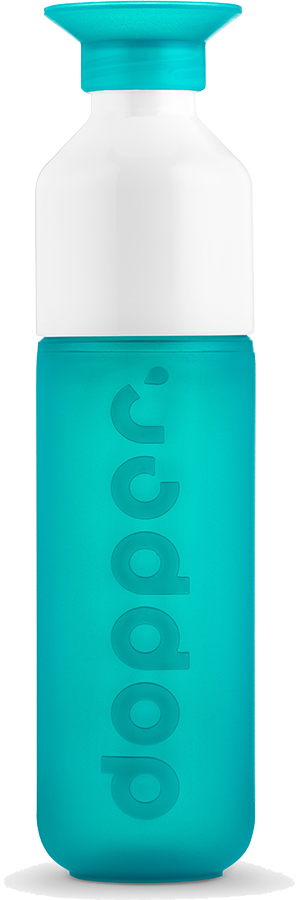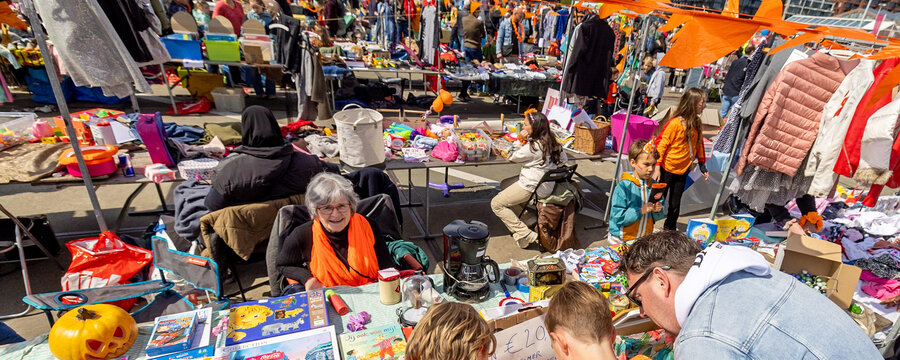You can buy them in every Stayokay hostel, but how did these colourful bottles actually get started? We talked to Merijn Everaarts, founder of Dopper, to find out.
What is Dopper's Mission?
Our aim is for everyone to take care of their environment. With regard to the Dopper bottles, this means that no single-use plastic is used and is released into nature. We also want everyone to have access to clean drinking water. 900 million people still do not have this! It's strange that we drink spring water from PET bottles when it comes out of the tap, and at the same time there are so many people in the world who do not have access to clean drinking water. Clean drinking water for everyone and only sustainable water bottles, that is what we are aiming for.
How did you come up with the idea of a new kind of water bottle?
Dopper has been around for nine years now, and was actually born out of my frustration with the mountains of plastic waste on the beach. We grumble a lot about countries like China and Indonesia, but we have our own problems too. I really wanted to do something about it.
Much of the plastic in our oceans consists of PET bottles. So I was looking for a sustainable alternative to PET bottles. Nine years ago, there were no water bottles with a sustainable mission, only water bottles. The new water bottle had to have something sexy, something you cherish and find beautiful. I made this idea known to the world through a design competition. Fortunately, the competition received a lot of press attention, which is why it started. The current design of the Dopper is the winner from back then.
So you involved the public in your company from the very beginning. Do you see Dopper primarily as a social project?
Yes. We live for the mission, not the turnover. I love spreading that mission. From a business perspective, the operation is run by other people. That gives me the time to be on stage worldwide as much as possible to inspire people and draw attention to things with works of art.
Can you give an example of such a work of art?
A good example is The Plastic Bridge, which we unveiled in New York on 8 June for World Ocean's Day. It is a replica of the Brooklyn Bridge, made of thousands of single-use plastic water bottles. It is the kick-off of a worldwide awareness project to do something against plastic pollution by means of education and inspiration. You can walk across the bridge under the slogan 'Take the bridge to a plastic free world'. You can 'fish' for plastic solutions on the bridge. We have a kind of sea of bottles lying there. These bottles contain solutions for our plastic consumption.
The Plastic Bridge also stands for connecting people. It's really about building bridges. Because building bridges, which is what we are literally doing in New York, is also about communicating a green message. This doesn't just apply to Dopper, of course. I see this also reflected at Stayokay: your hostels bring together lots of people who can inspire each other.
At Stayokay in Haarlem, for instance, there's a bee farm behind the hostel. This highlights the threat to the bee and is an important message. If you can influence one person, that's great, but at Stayokay, you have the opportunity to tell your story to several people. That's also the idea behind our awareness projects.
Have you noticed that building bridges is more difficult in America (in a proverbial sense!), a country that uses a lot of plastic?
That differs per region. In California, they know by now, but people in New York don't yet realise what plastic consumption entails. Actually, this applies to the entire east coast. But if you tell Americans, they immediately go 'The full monty'. They also say 'I'm going to do something about it right away! That is what I like about the Americans. Their opportunism is also in the change.
As far as drinking tap water is concerned: in some countries where we think 'they don't drink tap water', they actually drink a lot of tap water. In countries like Spain and Italy, especially in the north and around Rome, they really drink a lot of tap water, which comes straight from the mountains. But also in the United States, where the water is really of top quality and people drink it.
So the future looks bright?
The whole world is in transition. Globally, we are seeing a very big change in terms of waste and mobility. Nine years ago, nobody had heard of the plastic soup. But the whole world now knows it exists.
Now the question is: how are we going to solve it? Answers are being sought all over the world. In the United Kingdom, for example, we are growing fast; there, single-use plastic is a very hot topic and people are actually acting on it. The PET bottle is already no longer available in many supermarkets and department stores there.
Another development is the abolition of the plastic straw in Europe. That's pretty daring, but it's really necessary. We really have to stop now. If we continue like this, there will be more plastic than fish in the sea and in the ocean.
In the end, it's all about changing behaviour. To stay with Dopper: many people drink a glass of water at home, but as soon as they go out, they suddenly behave very differently and buy a PET bottle for the road. People often don't know that this behaviour can easily be changed. I think we can play a big role in that.
HOW DOPPERS ARE SAVING THE WORLD

Sustainable Production
Doppers are produced in a climate-neutral way in the Netherlands. The Dopper Originals bottle and cap are made from recyclable plastic polypropylene and the white cup from recyclable ABS.
Re-use
Plastic bottles are often thrown away after just one use. A Dopper, on the other hand, can be reused. The water bottles are easy to clean with a little washing-up liquid and water, and are dishwasher safe.
Awareness
With international projects such as The Plastic Bridge and The Plastic Madonna, Dopper is drawing attention all over the world to the single-use plastic problem in our natural environment.
Out of the tap, into the bottle
In addition to their sustainable materials, Doppers also help you drink more tap water. Tap water is much less harmful to the environment than spring water in other bottles.
Water for everyone
The Dopper Foundation receives 5% of the net turnover of Dopper. This money is used, among other things, to invest in drinking water projects worldwide. In Nepal alone, 20,000 people use Dopper facilities such as water stations.


